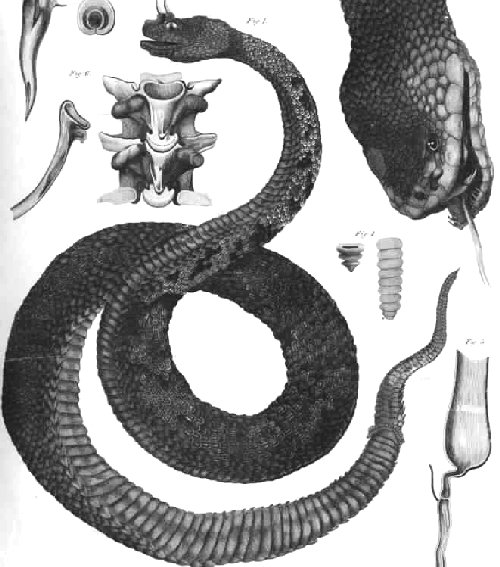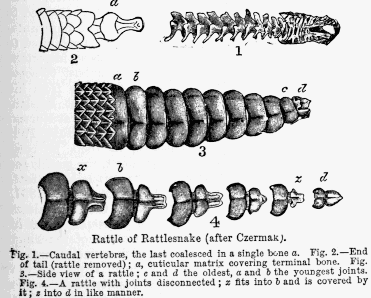Pit Viper
Today, a rattlesnake reminds us to see the world with an open mind. The University of Houston's College of Engineering presents this series about the machines that make our civilization run, and the people whose ingenuity created them.
In 1949, I rode a truck with a survey crew in central Washington state, up near the Canadian border. A rattlesnake crossed the dirt road in front of us. We got out and went after the unhappy beast with survey rods.
My reaction was shameful in that moment. My pulse raced. Terror and aggression lay their hold on me, while I beat the poor snake to death. Rattlers are standard icons of horror. I didn't react to the snake. I reacted to the icon.
Rattlers are one kind of pit viper. Pit vipers have two holes, or pits, on their snouts. The pits look like nostrils, but they're not. They're just two of the remarkable features on these adaptable, determined, and courageous reptiles.
Those pits are fitted with infrared sensors. The eyes above them see light. The pits see heat signals. We used to think the pits were for locating warm-blooded victims. It turns out they can do much more.
They read a very precise signal. Animals give off different heat signatures. Those infrared pits might tell whether the victim is a safe meal or a rattlesnake eater. They probably protect large beasts -- like you and me -- from attack.
Mating is serious business for rattlers. They go miles looking for females. They have to fight other males on the way. The fight is a wrestling match, and the loser suffers severe psychological damage. He loses his will.
Females test an approaching male by taking the male fight pose. Losers run. Only winners dare to claim their prize. It really is a case where only the brave deserve the fair. When mating finally does occur, it goes on for hours -- even days.
Pit vipers are far more advanced than other snakes. They're equipped with spare teeth. Their forked tongue is an enormously sensitive scent sensor. Unlike lesser snakes, pit vipers stay around to guard their eggs, once they're laid.
So we hold this ancient emblem of fear up to the light. We turn him about for a new look. He is, indeed, more than we thought. He's dangerous -- make no mistake. But study that wild-eyed, fanged face for function. You find a terrible beauty you missed the first time.
Here's a picture of a rattler. It says something to me about the creative process. It's our weakness when fear limits our vision. It's our incompleteness that keeps us from seeing him for what he really is. That rattler reminds us it's wise to keep looking for beauty in things we're ready to dismiss as ugly.
I'm John Lienhard, at the University of Houston, where we're interested in the way inventive minds work.
(Theme music)
Angier, N., Pit Viper's Life: Bizarre, Gallant and Venomous. Science Times. The New York Times, Tuesday, October 15, 1991, pp. B5, B9.

From the 1897 Encyclopaedia Britannica

From the 1897 Encyclopaedia Britannica
The structure of a rattlesnake's rattle